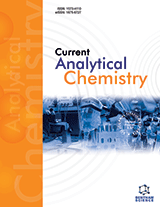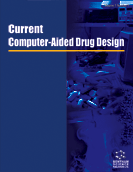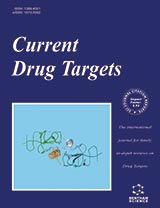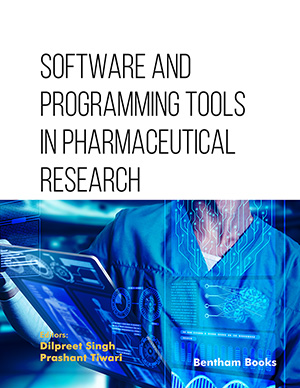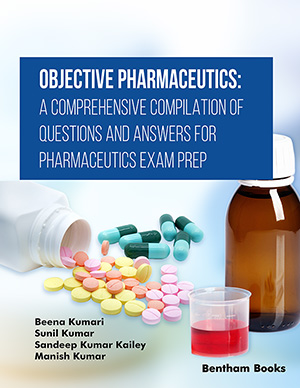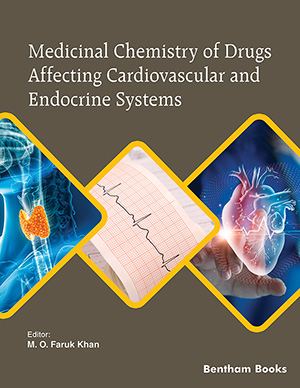Abstract
Since cell death by apoptosis plays a key role in the regulation of tissue homeostasis, dysregulation of the cells intrinsic death program may foster tumor formation and progression. “Inhibitor of apoptosis proteins” (IAPs) block apoptosis at the core of the apoptotic machinery by inhibiting effector caspases. Aberrant expression and/or function of IAPs are found in many human cancers and have been implied in resistance to current treatment approaches. Recent insights into the role of IAPs have provided the basis for various exciting discoveries that aim at modulating expression or function of IAPs. Thus, targeting IAPs, e.g. by antisense approaches or small molecule inhibitors, presents a promising novel approach for future drug development and may proof to be a successful strategy to overcome apoptosis resistance of human cancers.
Anti-Cancer Agents in Medicinal Chemistry
Title: Targeting Inhibitor of Apoptosis Proteins (IAPs) for Cancer Therapy
Volume: 8 Issue: 5
Author(s): Simone Fulda
Affiliation:
Keywords: Apoptosis, cancer, IAPs, Smac
Abstract: Since cell death by apoptosis plays a key role in the regulation of tissue homeostasis, dysregulation of the cells intrinsic death program may foster tumor formation and progression. “Inhibitor of apoptosis proteins” (IAPs) block apoptosis at the core of the apoptotic machinery by inhibiting effector caspases. Aberrant expression and/or function of IAPs are found in many human cancers and have been implied in resistance to current treatment approaches. Recent insights into the role of IAPs have provided the basis for various exciting discoveries that aim at modulating expression or function of IAPs. Thus, targeting IAPs, e.g. by antisense approaches or small molecule inhibitors, presents a promising novel approach for future drug development and may proof to be a successful strategy to overcome apoptosis resistance of human cancers.
Export Options
About this article
Cite this article as:
Fulda Simone, Targeting Inhibitor of Apoptosis Proteins (IAPs) for Cancer Therapy, Anti-Cancer Agents in Medicinal Chemistry 2008; 8 (5) . https://dx.doi.org/10.2174/187152008784533107
| DOI https://dx.doi.org/10.2174/187152008784533107 |
Print ISSN 1871-5206 |
| Publisher Name Bentham Science Publisher |
Online ISSN 1875-5992 |
Call for Papers in Thematic Issues
Induction of cell death in cancer cells by modulating telomerase activity using small molecule drugs
Telomeres are distinctive but short stretches present at the corners of chromosomes and aid in stabilizing chromosomal makeup. Resynthesis of telomeres supported by the activity of reverse transcriptase ribonucleoprotein complex telomerase. There is no any telomerase activity in human somatic cells, but the stem cells and germ cells undergone telomerase ...read more
Role of natural compounds as anti anti-cancer agents
Cancer is considered the leading cause of worldwide mortality, accounting for nearly 10 million deaths in 2022. Cancer outcome can be improved through an appropriate screening and early detection and through an efficient clinical treatment. Chemotherapy remains an important approach in treatment o f several types of cancers, even though ...read more
Signaling and enzymatic modulators in cancer treatment
Cancer accounts for nearly 10 million deaths in 2022 and is considered the leading cause of worldwide mortality. Cancer outcome can be improved through an appropriate screening and early detection and through an efficient clinical treatment. Chemotherapy, radiotherapy and surgery are the most important approach for the treatment of several ...read more
 7
7
- Author Guidelines
- Graphical Abstracts
- Fabricating and Stating False Information
- Research Misconduct
- Post Publication Discussions and Corrections
- Publishing Ethics and Rectitude
- Increase Visibility of Your Article
- Archiving Policies
- Peer Review Workflow
- Order Your Article Before Print
- Promote Your Article
- Manuscript Transfer Facility
- Editorial Policies
- Allegations from Whistleblowers
Related Articles
-
Microenvironment and Brain Tumor Stem Cell Maintenance: Impact of the Niche
Anti-Cancer Agents in Medicinal Chemistry Biological Activities of QIAPI 1 as a Melanin Precursor and Its Therapeutic Effects in Wistar Rats Exposed to Arsenic Poisoning
Central Nervous System Agents in Medicinal Chemistry Procyanidin B2 3,3″-di-O-gallate Inhibits Endothelial Cells Growth and Motility by Targeting VEGFR2 and Integrin Signaling Pathways
Current Cancer Drug Targets An Efficient Light-weight Network for Fast Reconstruction on MR Images
Current Medical Imaging Superparamagnetic Magnetite (Fe3O4) Nanoparticles for Bio-Applications
Recent Patents on Materials Science Current Limitations in the Treatment of Parkinson’s and Alzheimer’s Diseases: State-of-the-Art and Future Perspective of Polymeric Carriers
Current Medicinal Chemistry Minocycline and Doxycycline: More Than Antibiotics
Current Molecular Pharmacology Strategies to Overcome Multi-Drug Resistance in Cancer Cells: the Contribution of siRNA and Nanotechnologies
Current Organic Chemistry Functional Roles of the Ca2+-activated K+ Channel, KCa3.1, in Brain Tumors
Current Neuropharmacology Anticancer Activity of Organogallium(III) Complexes in Colon Cancer Cells
Anti-Cancer Agents in Medicinal Chemistry Arsenic Trioxide Exerts Anti-lung Cancer Activity by Inhibiting Angiogenesis
Current Cancer Drug Targets Up-regulated Circulating miR-106a by DNA Methylation Promised a Potential Diagnostic and Prognostic Marker for Gastric Cancer
Anti-Cancer Agents in Medicinal Chemistry New Perspectives in Glioblastoma: Nanoparticles-based Approaches
Current Cancer Drug Targets Challenges and Strategies in Precision Medicine for Non-Small-Cell Lung Cancer
Current Pharmaceutical Design Antiangiogenic Therapy for High-Grade Gliomas
CNS & Neurological Disorders - Drug Targets Scorpion Toxin Polyptides as Therapeutic Agents: An Overview
Protein & Peptide Letters Sulfonamides and Sulfonylated Derivatives as Anticancer Agents
Current Cancer Drug Targets The Role of the Endoplasmic Reticulum in the Accumulation of β-Amyloid Peptide in Alzheimers Disease
Current Molecular Medicine Advances in Nanomedicine Towards Clinical Application in Oncology and Immunology
Current Pharmaceutical Biotechnology GRP78 Influences Chemoresistance and Prognosis in Cancer
Current Drug Targets








